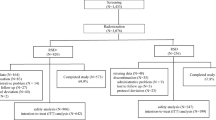Abstract
In Japan, unlike in the United States and Europe, where osteoporosis is synonymous with postmenopausal osteoporosis, the need for treatment of osteoporosis has been emphasized only for elderly women with established disease. This may be because women in the immediate postmenopausal period in Japan are virtually free of symptoms such as lumbago and signs such as spinal compression fracture. Osteoporosis typically does not manifest itself until about age 65; therefore, postmenopausal osteoporosis with vertebral fracture below the age of 60 is quite rare in Japan. Unique features of treatment for osteoporosis in Japan include rare use of estrogen replacement therapy, common use of vitamin D derivatives (especially lα(OH) vitamin D) without notable side effects, and use of calcitonin almost exclusively in a low-dose intermittent regimen (20 U/week). Similarly, the use of ipriflavone is common, and calcium supplementation, especially with an active absorbable algae calcium with high bioavailability (AAACa), is effective and popular. The emphasis on the use of calcium, vitamin D, and calcitonin in the treatment of osteoporosis may be explained by an extremely low dietary calcium intake in Japan. Other factors that favor reliance on the calcium-focused approach and avoidance of estrogen include a fatalistic and naturalistic view toward menopause; an uneasiness with hormone replacement therapy; an older female population who seek osteoporosis treatment because of uneventful immediate postmenopausal periods; and the efficient absorption of calcium from the intestine with favorable response to exogenous vitamin D due to a longstanding calcium deficiency and possibly a low incidence of vitamin D-receptor abnormalities.
Similar content being viewed by others
References
Hashimoto I (1995) Methods of epidemiological survey on osteoporosis (in Japanese). Proc Jpn Osteoporosis Foundation Semin 12:19–33
Fujita T (1994) Osteoporosis in Japan: factors contributing to the low incidence of hip fracture. Adv Nutr Res 9:88–99
Fujita T (1992) Vitamin D in the treatment of osteoporosis. Proc Soc Exp Biol Vied 199:394–399
Meunier PJ, Chapuy MC (1995) Calcium and vitamin D supplementation for preventing hip fractures in the elderly. In: Burkhardt P, Heaney R (eds) Nutritional aspects of osteoporosis ’94. Ares-Sereno Publications, Rome, Italy, pp 223–228
Meunier PJ, Chapuy MC, Arlot ME. et al. (1994) Can we stop bone loss and stop hip fracture in the elderly? Osteoporos Int l(suppl):71–76
Ooms ME, Roos JC, Bezemer PD, et al. (1995) Prevention of bone loss by vitamin D supplementation in elderly women: a randomized double-blind trial. J Clin Endocrinol Metab 80: 1052–1058
Gilbert C (1993) Low risk to certain diseases in aging: role of the autonomie nervous system and calcium metabolism. Mech Ageing Dev 70:95–113
Morrison NA, Qi JC, Tokita A, et al. (1994) Prediction of bone density from vitamin D receptor alleles. Nature 367:284–287
Hustmyer FG, Peacock M, Hui S, et al. (1994) Bone mineral density in relation to polymorphism at the vitamin D receptor gene iocus. J Clin Invest 94:2130–2134
Matsuyama T, Ishii S, Tokita A, et al. (1995) Vitamin D genotypes and bone mineral density. Lancet 345:1238–1239
Matsuyama T, Tokita A, Yabuta K, et al. (1995) Therapeutic effects with active vitamin D and vitamin D receptor polymorphism in osteoporosis (in Japanese). J Bone Miner Metab 13:87
Fujita T, Fukase M, Shimada T. et al. (1992) Treatment of established osteoporosis with lα(OH) vitamin D3 and intermittent elcatonin (eel calcitonin derivative). J Bone Miner Metab 10:37–40
Fujita T, Fujii Y, Miyauchi A, et al. (1994) ABCDEF treatment for osteoporosis (in Japanese). Osteoporosis Jpn 2:171–176
Author information
Authors and Affiliations
Rights and permissions
About this article
Cite this article
Fujita, T. Clinical guidelines for the treatment of osteoporosis in Japan. Calcif Tissue Int 59 (Suppl 1), S34–S37 (1996). https://doi.org/10.1007/s002239900174
Issue Date:
DOI: https://doi.org/10.1007/s002239900174




